7 results
Common Core 8.NS.A.1 laboratories
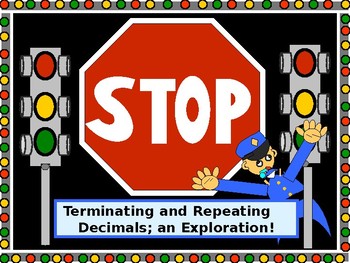
Math Lab: Terminating and Repeating Decimals/DISTANCE LEARNING/NO PREP
This is a GREAT lab for students to discover the value of patterns in our wonderful world of mathematics! * In the lesson, students DO discover a relationship between fractions and decimals beginning with NINETEEN FRACTIONS THAT STUDENTS ARE REQUIRED TO DIVIDE THE NUMERATOR BY THE DENOMINATOR ON EACH.* Students learn the meaning of the terms "terminating" and "repeating" relative to decimals.* Students learn how and when it is appropriate to use the bar above repeating decimals. *
Grades:
6th - 10th, Higher Education, Adult Education
Types:
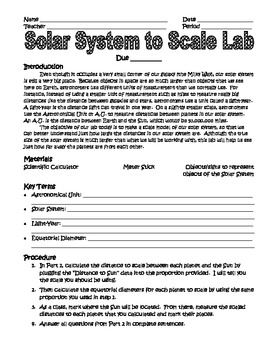
Solar System to Scale Lab
The objective of this lab is to make a scale model of our solar system, so as to better understand just how large the distances in our solar system are.
Materials Required
- Scientific Calculator
- Meter Stick(s)
- Objects/signs to represent each object in the Solar System
This lab is used in 8th grade physical science and 9th grade earth science. After students calculate the scale distances between each object in the Solar System, you then have the class make the scale solar system
Grades:
8th - 9th
Types:
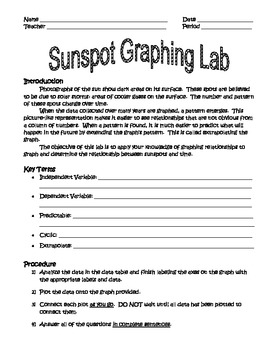
Sunspot Graphing Lab
The objective of this lab is to apply knowledge of graphing relationships to graph and determine the relationship between sunspots and time. Students will be asked to label and number the x- and y- axes on their graph, plot data in a line graph format, interpret the relationship between the independent and dependent variables, and extrapolate the data shown on the graph to make predictions about future sunspot activity. This lab is used in a 9th grade earth science class and meets the New York
Grades:
8th - 9th
Types:

Math Lab Fibonacci Sequence Patterns in Nature
Welcome to Kindly Pass The Math!The following lab is intended to introduce students to The Fibonacci Sequence for the first time.* The lab is presented in an investigative manner, provoking thought among the students and guiding them into a great learning experience as they initially enter the world of The Fibonacci's Sequence.* Students find the lab to be as enjoyable as it is a great learning experience.* Students begin the lab by defining five pertinent terms to the lab investigation.* Th
Subjects:
Grades:
5th - 9th
Types:
Also included in: BUNDLE: Draw the Fibonacci Spiral, Fibonacci in Nature, Golden Ratio
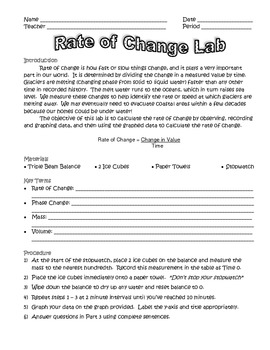
Rate of Change Lab
The objective of this lab is to calculate the rate of change by observing, recording and graphing data, and then using the graphed data to calculate the rate of change.
Materials Required (for each lab set-up)
- Triple (or quadruple) beam balance
- 2 Ice Cubes
- Paper Towels
- Stopwatch
This lab is used in 8th grade physical science and 9th grade earth science. It meets the New York State NYS science standards, as well as the common core standards.
Grades:
6th - 9th
Types:
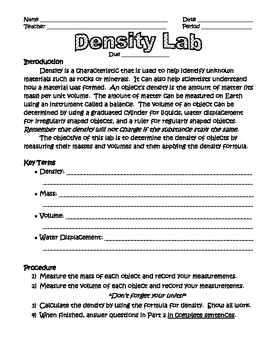
Density Lab
The objective of this lab is to calculate the density of 5 objects by measuring their masses and volumes and then applying the density formula.
Materials Required (for each lab set-up)
- Triple (or quadruple) beam balance
- Graduated Cylinder
- Ruler
- 5 materials to measure (the lab is written to use the following
materials: a sponge, a glass marble, a steel marble, an
aluminum bar, and a mineral. However, you can modify the lab
to use whatever materials you have
Grades:
6th - 9th
Types:

Math Discovery Lab: Square Roots, Multiples of 10, Rational vs Irrational
This is one of a series of self-guided discovery labs for a meaningful understanding of core mathematical concepts. Students use the familiar format of the scientific method to answer a mathematical question/problem. In this lab, students investigate the relationships among square roots, perfect squares, and positive and negative powers of ten (10). This math lab also explores when the square root of numbers such as 0.016, 0.16, 1.6, 16, 160, 1600 are rational or irrational. Full answ
Subjects:
Grades:
4th - 10th
Types:
Showing 1-7 of 7 results

